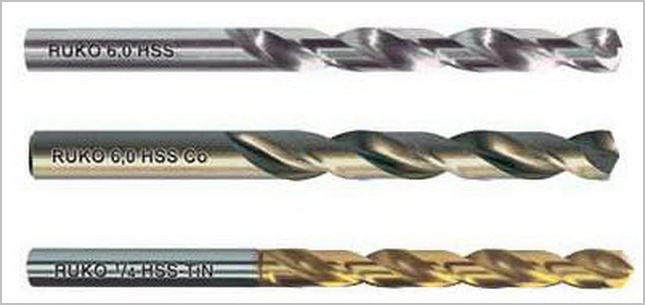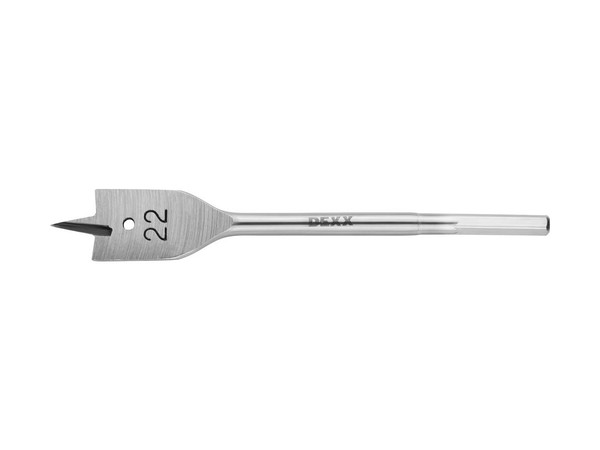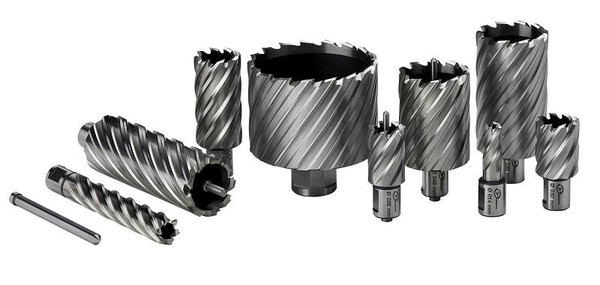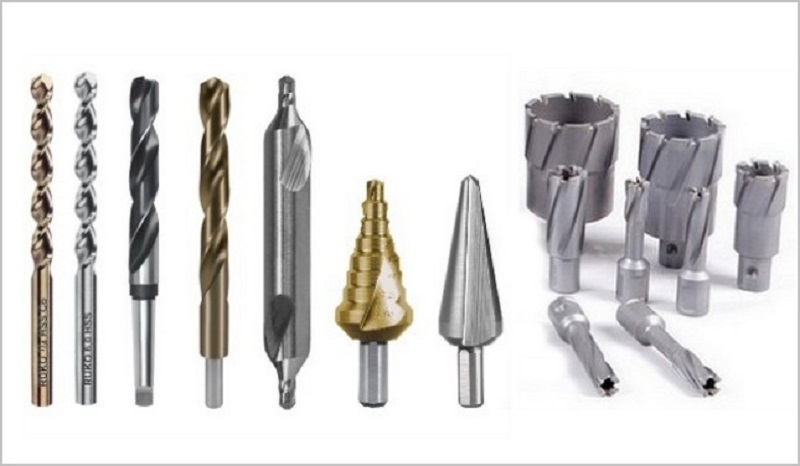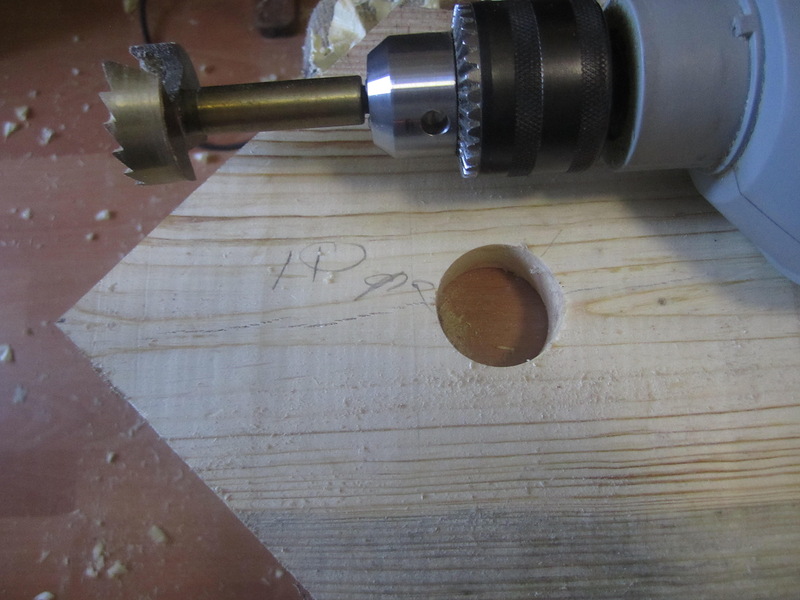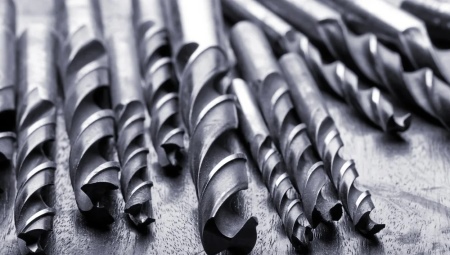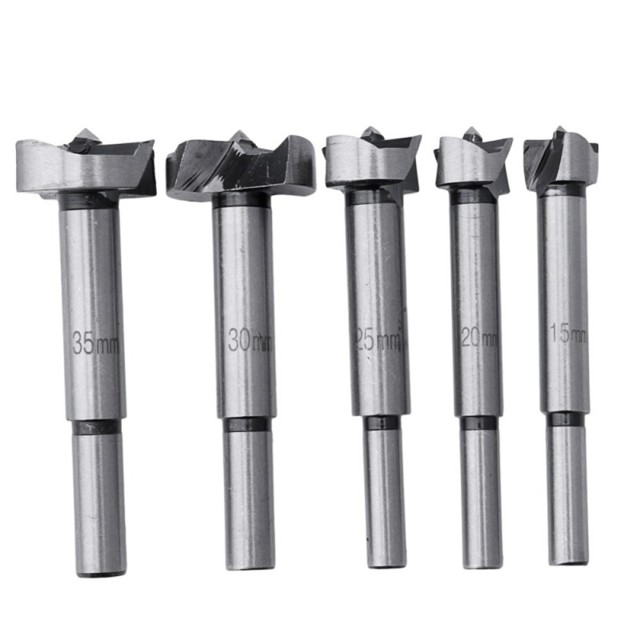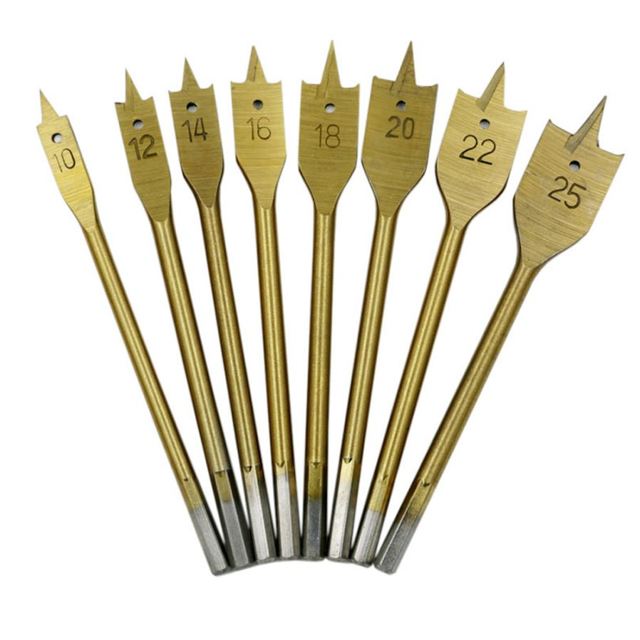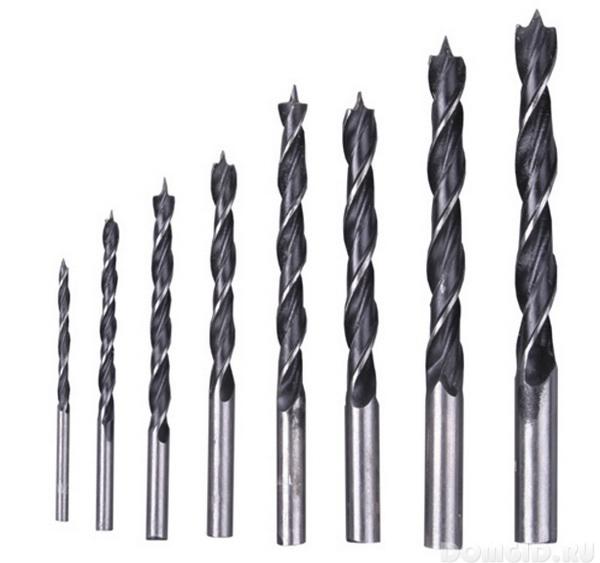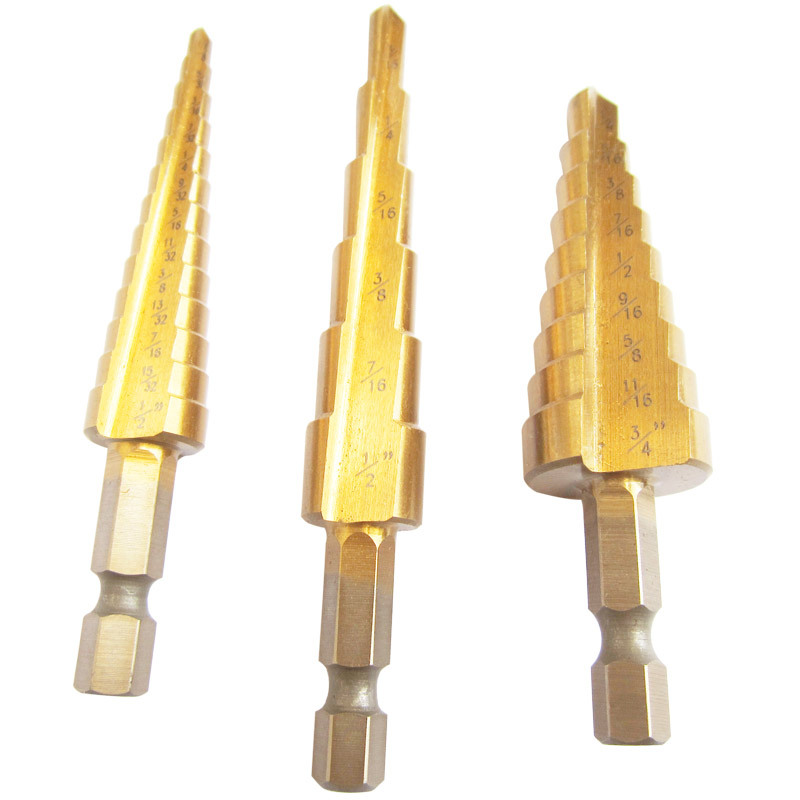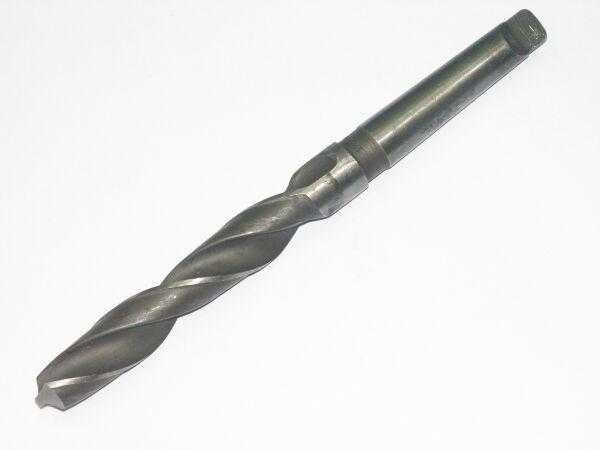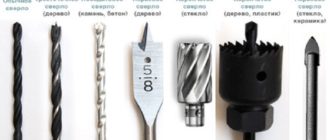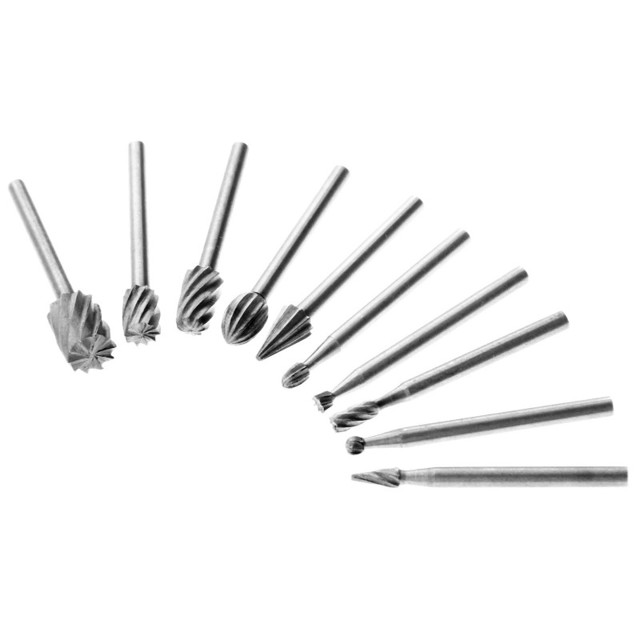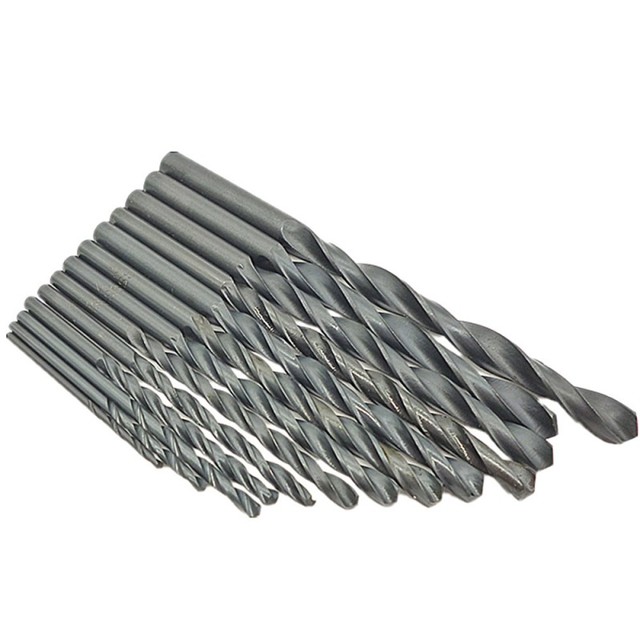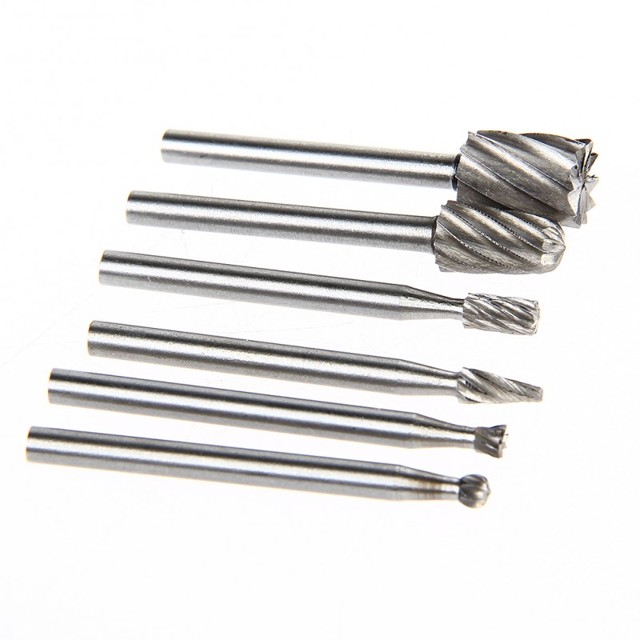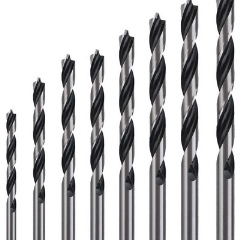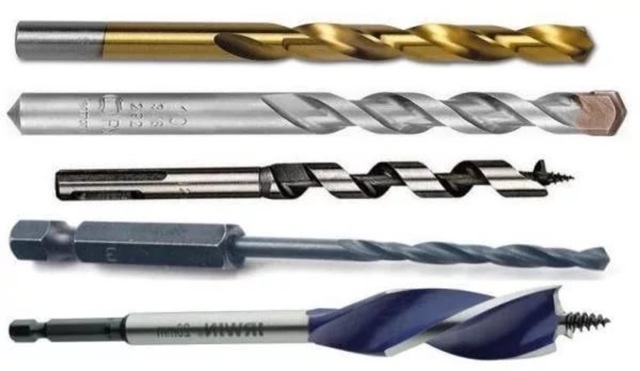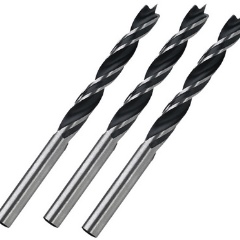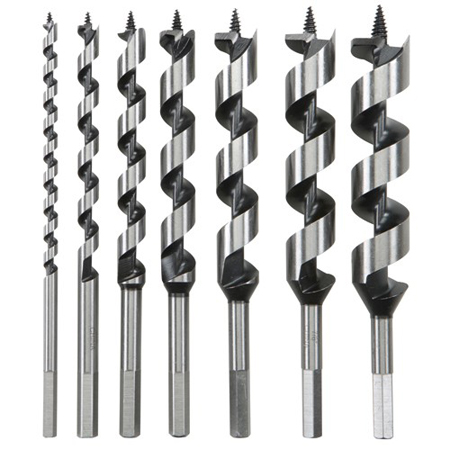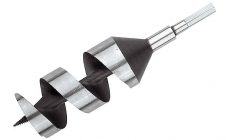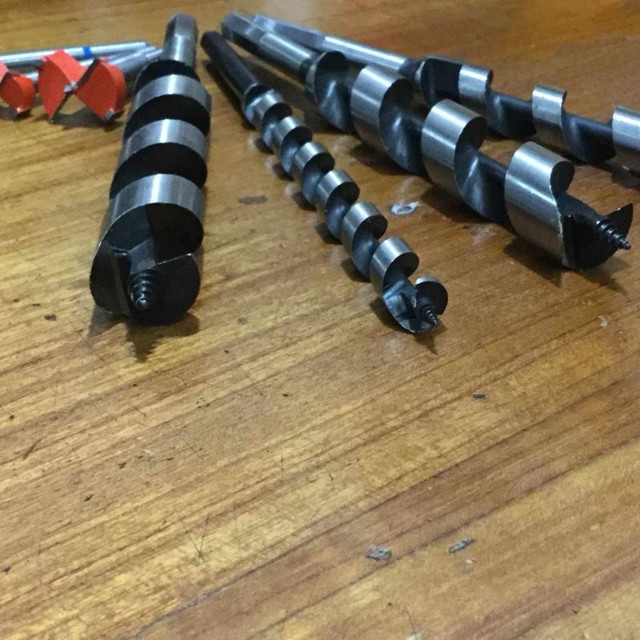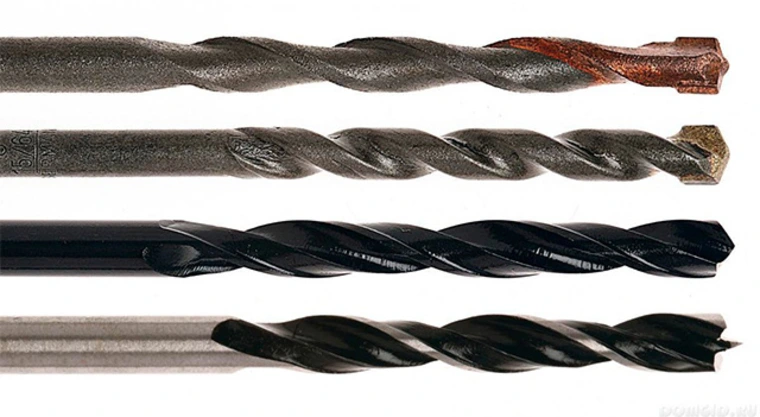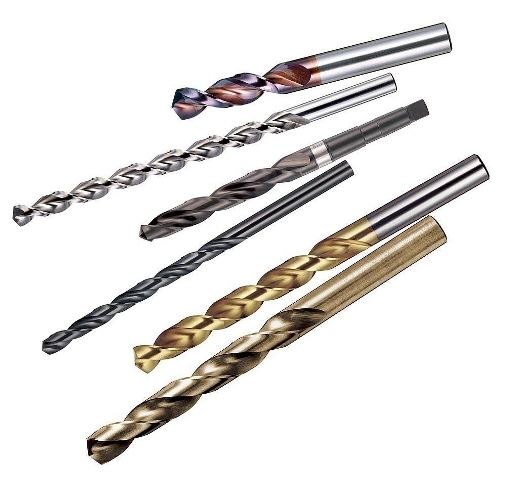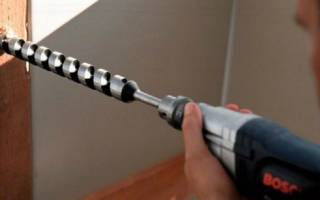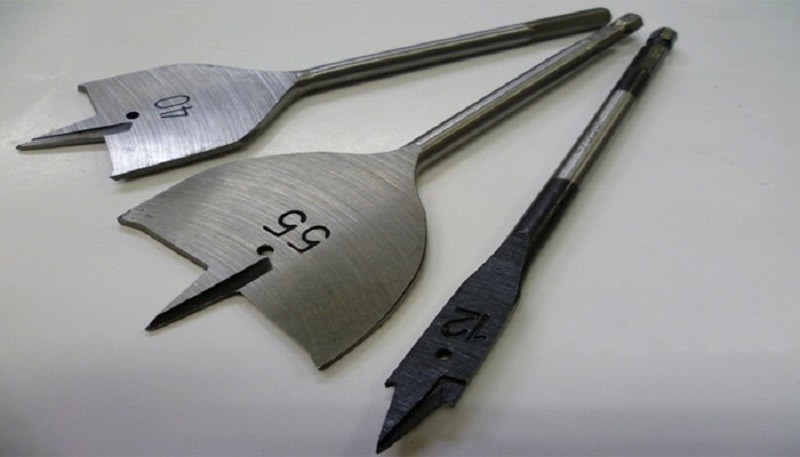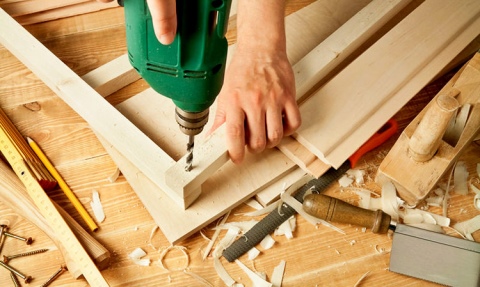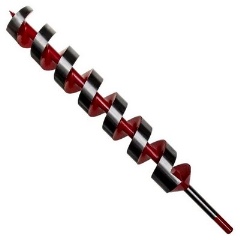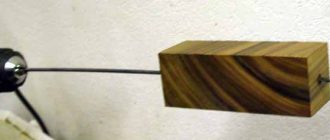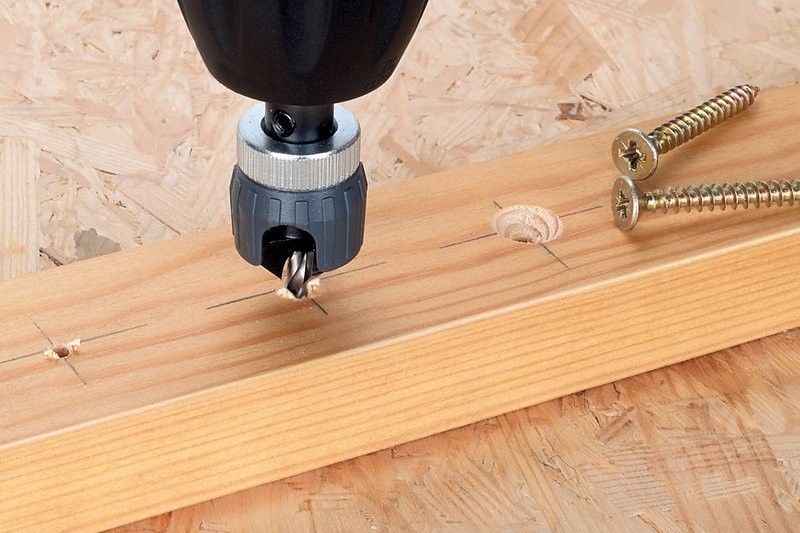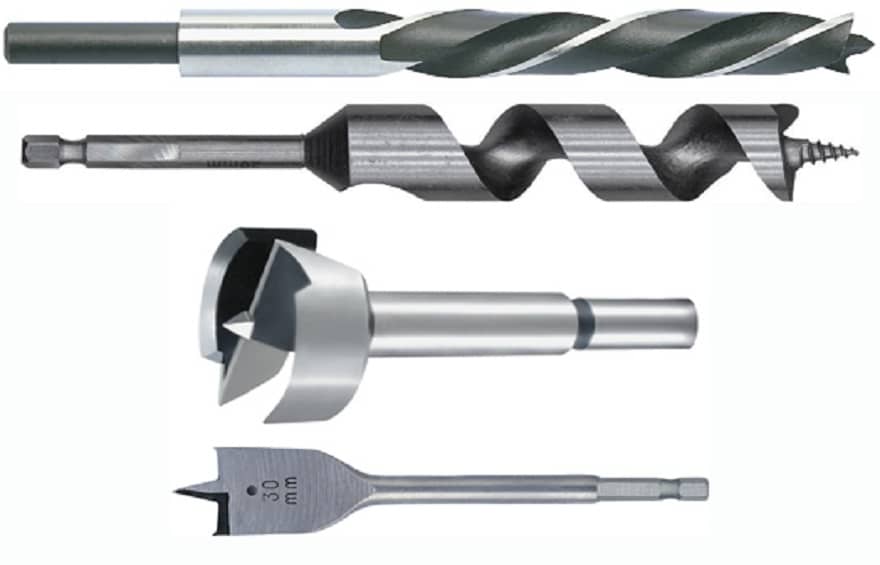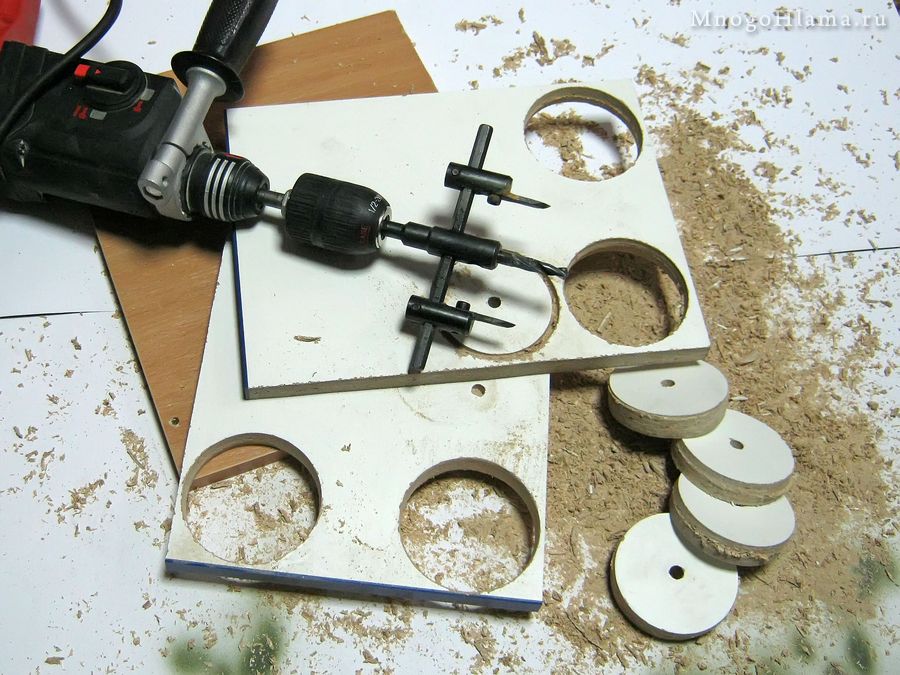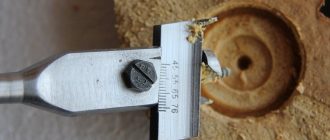Features of performing work on drilling wood
There are a huge number of names of the offered goods on the market. The varieties do not stop at the presented list, for example, plug drills are used to obtain tapered pins. Holes in wooden structures can be made with any material at hand, even a cutter or drill.
Drilling technology depends on the thickness and density of the material. Usually, the work is performed initially with a drill of a smaller diameter, to prevent spalling from the back of the product. The process is carried out preferably on both sides according to the prepared markings. When this opportunity is not provided, a wooden beam is placed at the point where the drill comes out of the workpiece. To obtain the necessary indentations, marks are applied to the cutting element, which are necessary for visualizing the process.
Forstner drills
Benjamin Forstner received a patent for a cylindrical drill for woodworking back in 1874. And since then it has been actively used. The working part of such a nozzle has two main cutting edges and a short centering point. In profile, the product resembles the Latin letter Z with roundness at the top and bottom. There is a cutting edge on the lintel, and a scoring edge along the circumference, which, after creating a hole, also serves as a limiter, that is, it holds the tool in a given diameter.
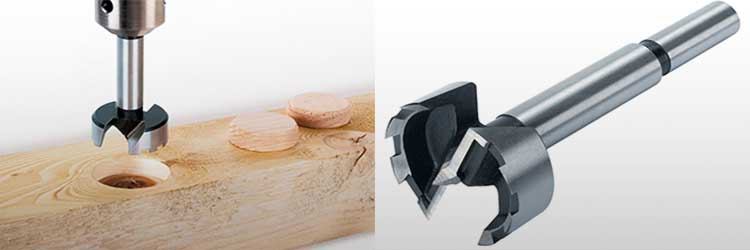
The main cutting edge of Forstner drills is made entirely of carbide and therefore has a long service life. The diameter of these carbide products can vary from 10 to 50 mm.
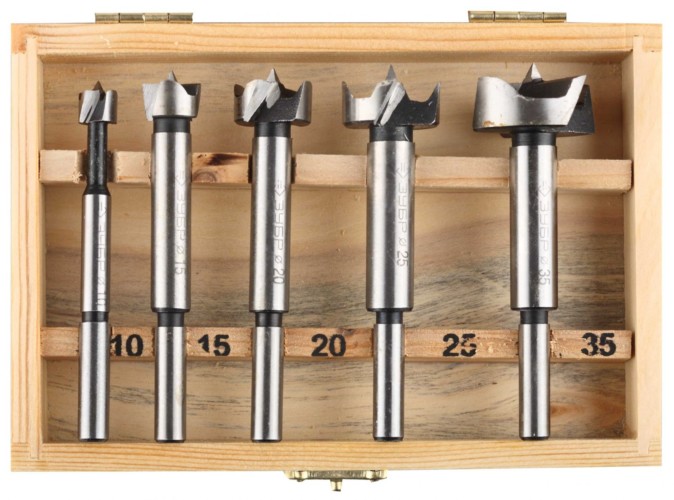
The Forstner drill was designed to drill blind holes with a flat bottom in wood of varying degrees of hardness. At the present time, it is also used for processing fiberboard, MDF, chipboard.
> Forstner's tip is much better than core drills for wood, it is suitable for accurate work with furniture fittings (locks, cup hinges, ties, etc.). It is here that blind holes with a flat bottom, smooth and neat edges are often used. This drill can cut any such hole in a short time.
What are they?
Twist drills can be produced in several different designs.
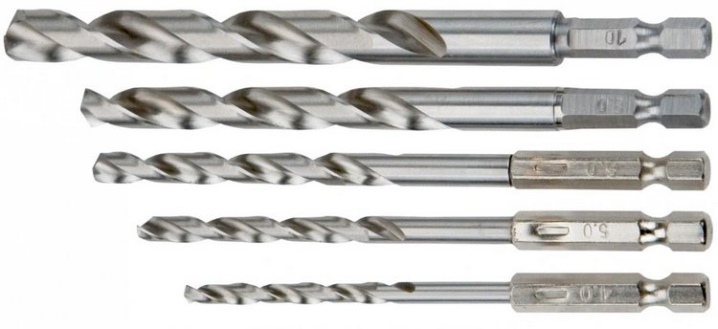
Separately, it is worth considering options depending on the type of tip.
Taper-tipped drills. Such models are perfect for processing metal objects, plastics, wood and many other materials with different thicknesses. Samples with this type of tip can be used both in everyday life and in industry. These tools work in such a way that rotational frequent movements lead to cutting of materials, while the subsequent feed of the drilling direction is observed. These products can be produced in three variations: with an elongated, medium and short working part. Each of them is intended for a specific type of work with the material. The tapered shank allows for a significant increase in the depth of the holes, and this leads to increased reliability, strength and durability of future fasteners. The helix is connected to such a shank using a special adapter sleeve. The model provides drilling along the wood grain.
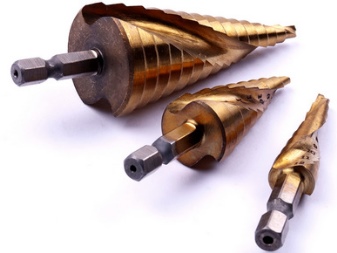
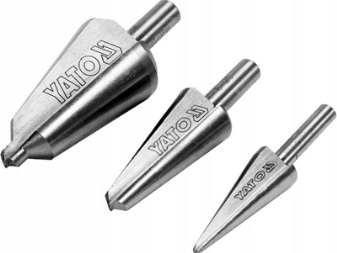
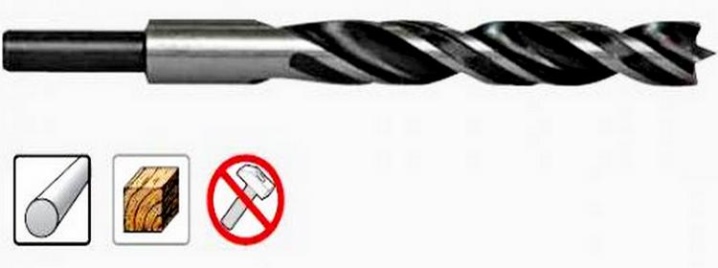
Some standard twist drills are manufactured with additional carbide inserts. These products are suitable for the hardest wood species.
The group of twist drills also includes the Lewis model, which is specially designed for creating indentations in wood. It comes with a serpentine profile. The sharpened part looks like a simple screw.
The Lewis drill makes it possible to create indentations with perfectly flat walls. It provides maximum precision in the drilling process, which is achieved using a special design of the screw nozzle.
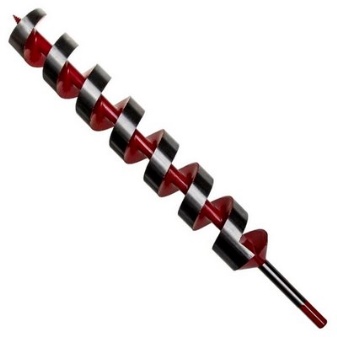
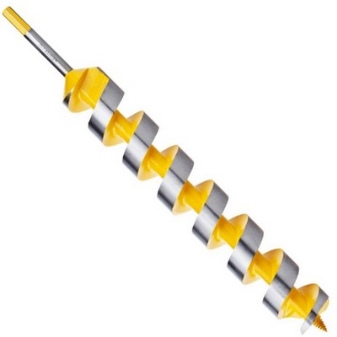
The indentations made with the Lewis drill have a large diameter. The model is equipped with a massive attachment that surrounds the core located in the central part. A small threaded tip is provided on the working side of the device, such an element allows the rod to penetrate the work surface at a given point without possible bending.
The outer part of the drill is specially processed. It must be absolutely smooth and have a mirror-like shine, it is this manufacturing technology that allows you to make the inside of the holes even.
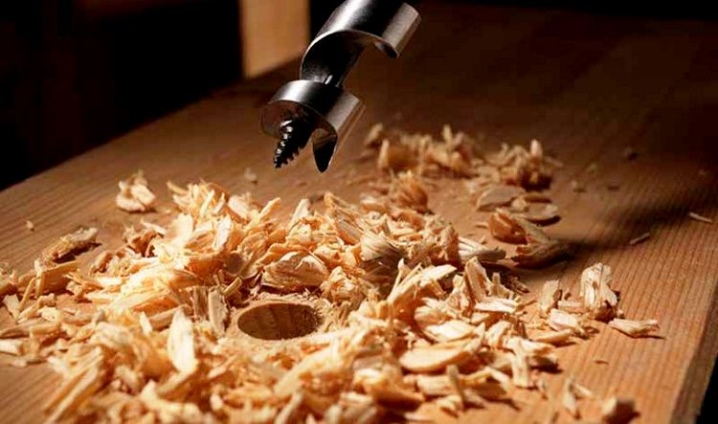
In hardware stores, you can see models with a diameter of 2-6 mm, they belong to the shortened category. As a rule, they come with a tapered nozzle at the end.
There are also samples with a diameter of 5 to 10 mm (elongated category) and special drills with a value of 4-32 mm. The latter group includes various models with a center and tree cutters.

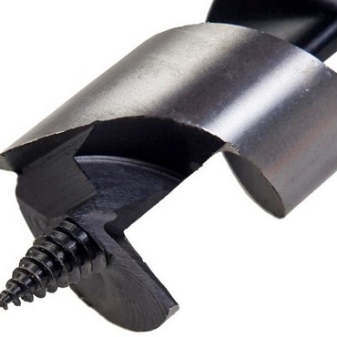
How to work
If you have to make small holes at home (no more than one or two cm in diameter) in a chipboard or solid wood, then a standard twist drill for metal can also handle this. But large holes or holes requiring increased accuracy are drilled only with a special tool designed for working with wood.
The drill must first be sharpened well, otherwise it will not cut, but rather tear the wood, and chips will accumulate in the hole
It is very important to keep the cutting edges straight when sharpening. Sharpening is carried out on an abrasive stone or by hand with a small square file
Optimally, if the angle of sharpening of the drill is 12 °.
Previously, you should also mark the centers of future holes. When marking, take into account:
- hardness of wood;
- the degree of its splitting;
- location of cracks (if any);
- direction and depth of drilling;
- the presence or absence of nails and other factors.
The centers of the holes are pricked with a triangular awl to the depth of the drill diameter. When drilling holes of large diameters, their centers are pre-drilled not with an awl, but with thinner drills - this is necessary so that the tool does not fall to the side. The centers of the deep through holes are drilled on both sides. And further drilling is also carried out on both sides.
If you need to drill a large number of identical holes in a wood mass, then it is better to have several drills of the same diameter in stock at once and change them periodically.
Another important tip: the diameter of the drill for installing the screws should be half a millimeter less than the diameter of the middle part of the screw. And, of course, if possible, it is better to use countersink drills specially designed for this task.
Features of the use of cobalt drills
Before drilling a hole, you need to consider:
- The quality of the metal to be drilled into. As already known, cobalt drills are recommended only for high strength alloy steels and alloys with high toughness grades. In other situations, you need to select a different tool.
- Hole diameter. Depending on the intended hole size, the most suitable cobalt metal drills should be purchased.For example, to drill a hole with a diameter of 9 mm, you need to purchase a drill with a diameter of 8.6 mm or 8.4 mm, since due to the impact force of the tool, the hole will necessarily increase.
- The depth of the required hole. If, for example, it will be drilled for a dowel, then you need to compare its length with the size of the drill and select a tool 2-3 mm larger.
- Drilling equipment such as hammer drill or drill. It is worth remembering that these two devices are fundamentally different. For example, drill shanks will be different for a hammer drill and a drill. And finally, the hammer drill serves more for chiselling, while the drill is only suitable for drilling.
- The surface to be treated. A cobalt drill is great for round or smooth metal surfaces, but is unlikely to be as effective on a surface with a high level of roughness.
Drill sharpening
Drills can become dull with frequent use. You can sharpen the tool yourself or contact a specialist. If you decide to do it yourself and do not have the skills, it is better to practice on an old instrument. When sharpening, the main thing is not to violate the desired geometry and adhere to a certain degree. Sharpening can be done manually or on an electric machine.
- Metal counterparts of drills are made of softer metal. They can be sharpened by hand using a file.
- Using an electric machine, the drill gets very hot. This can be avoided by constantly dipping it in water. Or organize a stream of water pouring onto the tip of the drill.
What does the color of the drill indicate?
By the color of the coating, you can roughly determine the characteristics of the drill. The drills of normal quality have the gray paint characteristic of steel.

A black color indicates that the drill has undergone oxidation. That is, it is protected from corrosion and has improved heat dissipation properties.
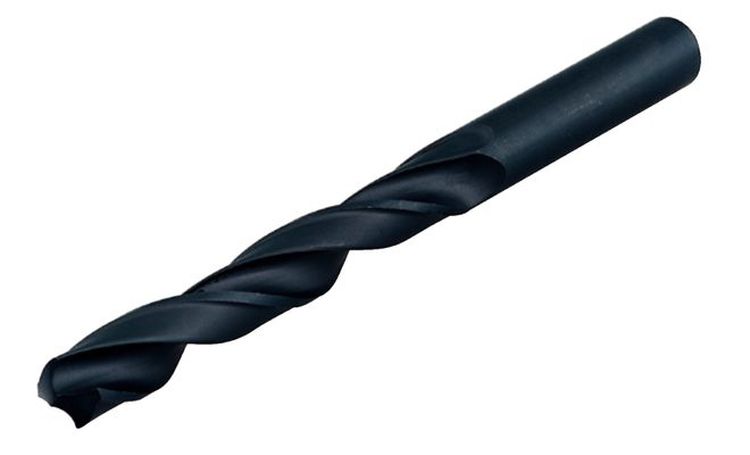
A light golden hue indicates that the drill has passed the tempering procedure, during which internal stresses are relieved.
Titanium nitride plating reveals itself in bright shine of gilding. Drills with it have an increased service life and low friction when drilling. Although they are more expensive, they more than justify their price with long-term operation.

Diamond plating can be recognized by its yellow color and powdery texture.
Visual identification of drill type
By the appearance of the cutting bit, you can determine the type of material from which the products are made and thereby find out the mechanical strength of the sample. By color, you can determine the composition and workmanship.
Gray
Gray drills are made of metal that has not been subjected to any additional processing.
The quality of the tool, in this case, leaves much to be desired, but such products are quite suitable for one-time use.
Black
This color indicates that the tool has been treated with superheated steam. In the process of processing, the product acquires greater strength.
It perfectly tolerates numerous heating and cooling cycles of the metal, and also maintains the sharpening of the working surface for a long time.
Dark golden
This color indicates that the cutting tool has been tempered. This type of processing significantly increases the mechanical strength of the product by reducing internal stresses.
A released drill can successfully process metals of increased strength, therefore, if you have to drill too hard alloys, it is recommended to purchase a similar model.
Bright golden
The bright golden color indicates that the metal used in the production was made with the addition of titanium.
Despite the high cost of such models, it is much more practical to purchase a high-quality drill than to use cheap cutting tools, which will need to be used in large quantities in difficult work.
Coating types
The drills are coated for different purposes: to protect against corrosion, to harden the surface layer, to improve heat transfer, and to reduce friction. The most common and inexpensive operation is oxidation. The drill is covered with a black oxide film, which protects it from rust and overheating.
Coating with titanium nitride (TiN) increases drill life by at least three times. However, these drills must not be sharpened as this removes the hardened layer. Titanium carbonitride (TiCN), which is also used for coating, is similar in properties to TiN.
Titanium Aluminum Nitride (TiAlN) makes the drill even stronger. When using it, the tool can work 5 times longer than usual.
The most durable coating is considered to be diamond sputtering. This is not surprising. Diamond ranks first in hardness among other materials. Diamond drills can be used to drill almost any material of hardness, including stone.
Features and areas of use
A drill for wood is easy to find in a specialized store or in the construction market. It is used to make holes in wood materials. Drill functionality is usually limited, so it can break if overused. Experts recommend using it in accordance with the technical parameters and capabilities.
The set of drills contains various models that can work with wood surfaces of different thicknesses and specific types of wood. For example, a 20mm piece can handle oak, alder and cedar. Often, the drill has a hexagonal base with a volume of 5 to 50 mm.
Quality products are always well sharpened, so they are tightly fixed on the surface. A large base has a slow drilling speed. Interaction is based on the frictional force between elements. A high quality set of fixtures is usually yellow in color, this shade indicates the presence of titanium dioxide in the alloy. Yellow drills have a long service life in contrast to disposable gray drills.
The strong and wear-resistant drill has a black color, as it is produced by hardening the metal. Since there are a large number of wooden elements in a modern interior, in order to fix them, it is required to use special drills that accurately and correctly make the necessary holes.
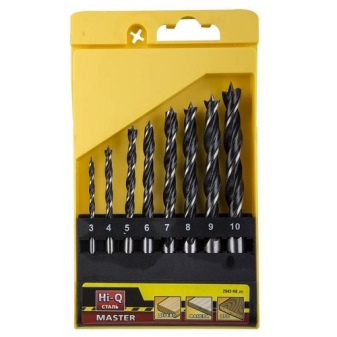
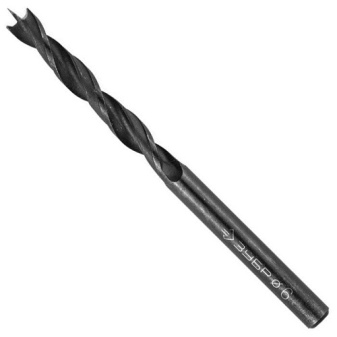
A wood drill can be used to form two types of holes.
- Deaf. In this case, there is no exit from the back side of the material. With the help of such holes, you can mount hinges for installing an interior door or furniture door.
- Through. This type of hole is required to install a door handle or lock.
The advantages of nozzles that are used for drilling wood are considered to be a wide range of models, the possibility of lengthening and sharpening if necessary, as well as ease of use.
Disadvantages:
- limited diameter;
- the possibility of forming rough holes;
- tendency to periodic blunting.
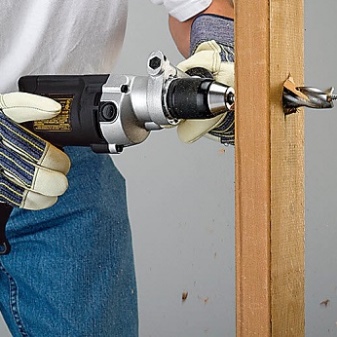
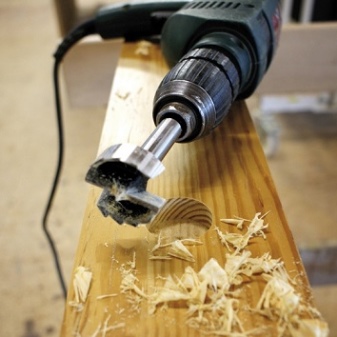
Marking of cutting products
Drill bits for metal are required to determine the type of steel from which the cutting tool is made. The product also indicates its diameter, accuracy class and manufacturer (country). Only spiral gimbals with a diameter of less than 2 mm are not marked.
In other cases, drill markings can have the following meanings:
- P9 - made of high speed steel with a tungsten percentage of 9%.
- Р9К15 - indicates the presence of cobalt in high speed steel in the amount of 15%.
- Р6М5К5 - denotes the presence of a complex composition of cutting steel containing tungsten, cobalt and molybdenum.

Imported products have the designation HSS, by which you can determine the composition of the material from which the drill was made. The HSS drill - the decoding of which will be given below, is used with an additional letter, which determines the presence of an alloying metal.
HSS Marking:
- HSS-E - contains cobalt. It is used in the processing of metals with high viscosity.
- HSS-Tin - has a titanium sputtering, which significantly increases the hardness of the working surface, and the temperature resistance of the material increases to +600 degrees.
- HSS-E VAP - cutting tools are used for processing stainless materials.
- HSS-4241 - designed for drilling aluminum.
- HSS-R - have maximum strength.
